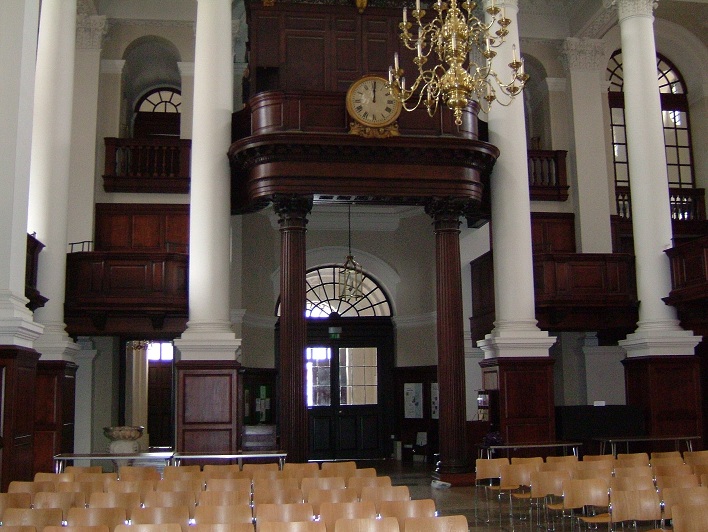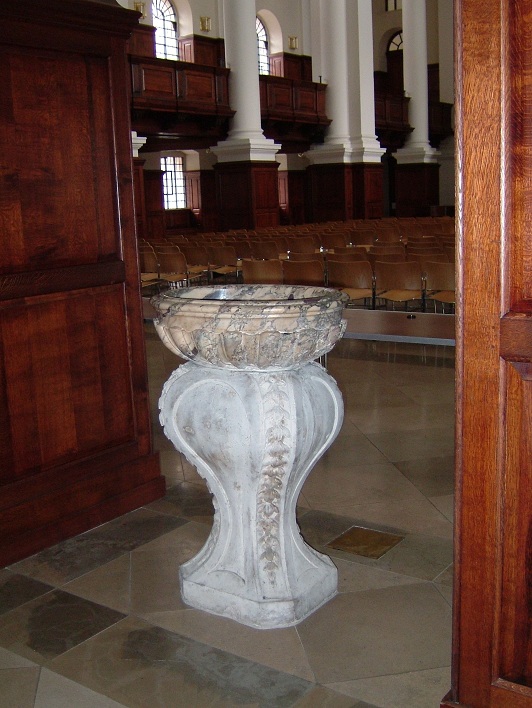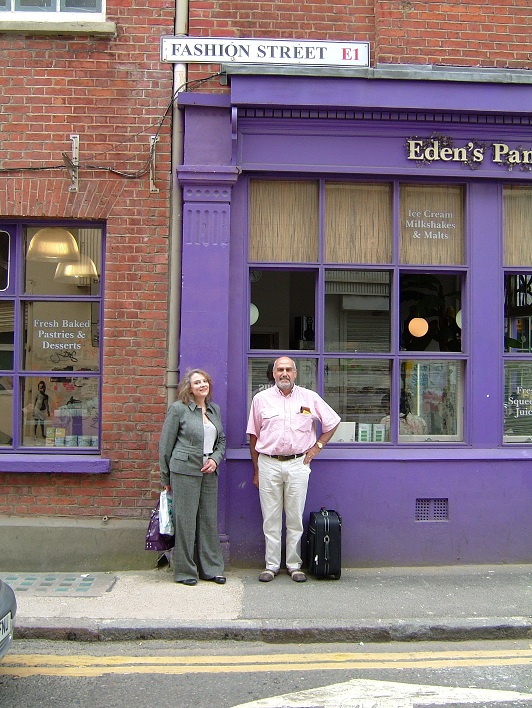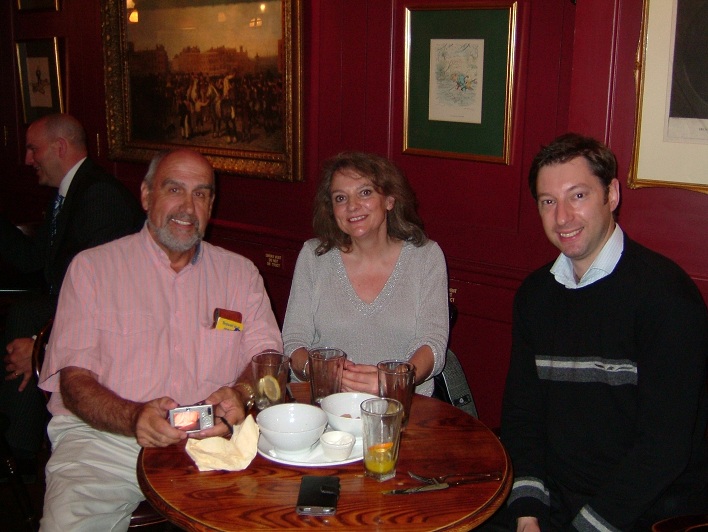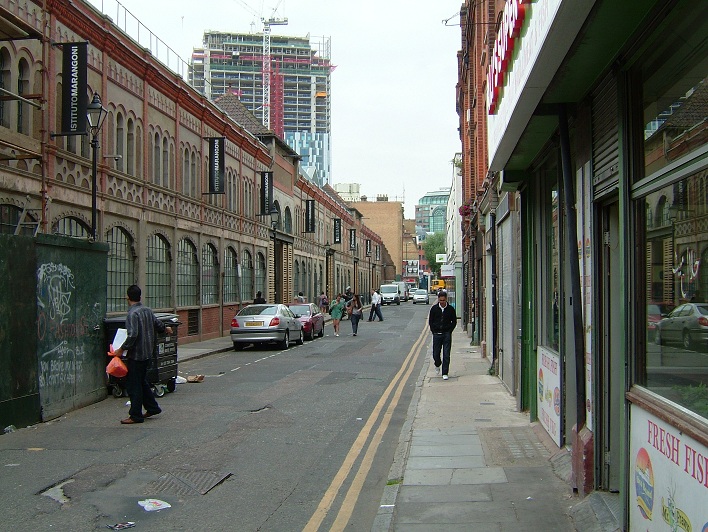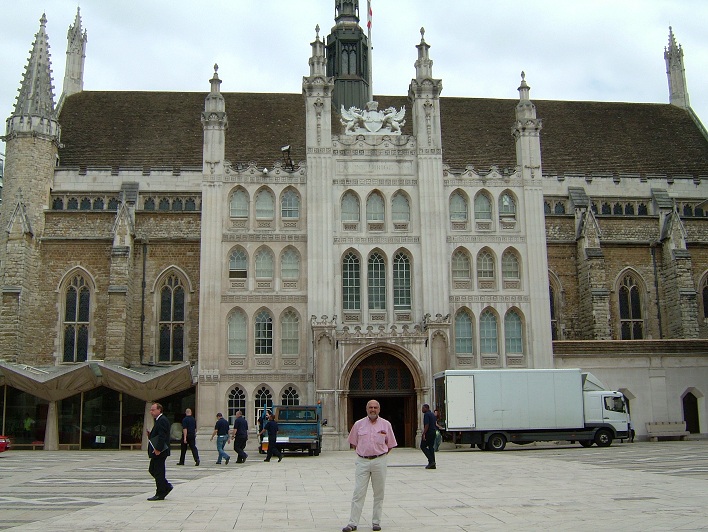The Bower & Collier Family History
Research by Colin Bower
Brecht One Name Study
Visit to Spitalfields 3 June 2009
On Wednesday 3 June 2009, I met up with two cousins and my son in London.
We made a very successful visit to Spitalfields where we were lucky that Christ Church, Spitalfields, the magnificent 18th Century church designed by Nicholas Hawksmoor, was open:
Three of Heinrich (Henry) and Mary Brecht’s children Charlotte, Maria and Elisabeth were sadly buried there when young (Maria was baptised there). Later Henry's wife was buried there in 1819 (age 35)and a further daughter Eleanor (age 17 months in 1824). Henry himself was buried there in 1838.
It is planned that the 18th century organ at the church be refurbished:
The original font is still in its symbolic position at the entrance to the church:
Visit to Fashion Street, Spitalfields
We went on to Fashion Street, Spitalfields where we knew Henry Brecht was a colour manufacturer from 1823 to 1827. Later (by 1836) he had transferred his business to Bonner Street, Bethnal Green:
Lunch in Bishopsgate
Our son Steve came over from Canary Wharf to join us and we had a light lunch (we all opted for the Bishopsgate club sandwich…..well when in Rome or Bishopsgate):
Visit to Bishopsgate Library
We went to Bishopsgate Library and held the famous Survey of London book (but which had disappointingly little about Fashion Street):
In 1650s the south side of the street had small houses.
In a 1681 map the street was to be extended with a “New Fashion Street”
(In a 1720 map, that I obtained form the internet, the extended Fashion Street is shown.)
In a 1746 map the extended portion was renamed White Row.
In 1858 Fashion Street was in a “fearful state”.
In 1905 one side of the street (the 12 Fashion Street side it appears) was developed into a Moorish market or Fashion Street Arcade:
The Dye Industry
We did look at a few books etc about Spitalfields and the silk industry. I had often wondered how one person like Henry Brecht could compete in the dye industry on his own and found an interesting entry in one of the books about the silk industry:
“Dyeing has always been a secretive and competitive business for various sects…. Little was written down and a lot of techniques were confined to memory and passed from generation to generation. The use of natural ingredients was a necessity until the introduction of synthetic dyes. Making the colours fast posed other constraints.”
Visit to Guildhall Library
We went on to the Guildhall Library where I found entries for Henry Brecht in some of the early London directories:
Kent’s London Directory
1812 No entry
1813 No entry
1814
Brecht, H manuf of printing colours
12 Fashion Street, Spitalfields
Johnstone’s London Commercial Guide & Street Directory 31 August 1817
Fashion St, Spitalfields
Length: 236 yards – No of Houses 63
Brecht, Henry, Colour manufacturer
12 Fashion Street
So we can place Henry and his family at 12 Fashion Street from 1814 – 1826/7 at least and there is a hint that the colours were used for printing (though could be on cloth or paper…there was a paper staining industry).
We also found some entries on the Guildhall database about exhibitions and books about the silk industry which we aim to follow up.
Altogether an enjoyable and interesting day, with a little more learnt on the dye industry and when the family were living at Fashion Street.
Colin Bower
31 July 2009


